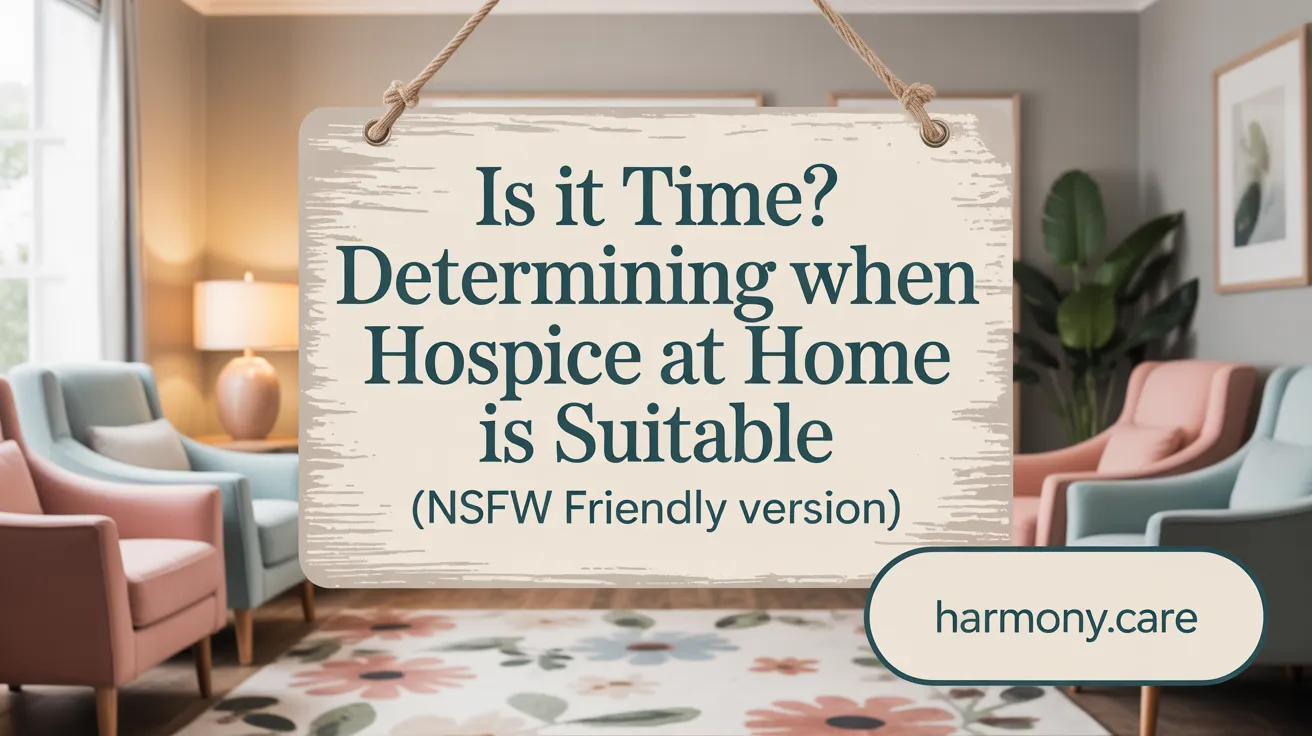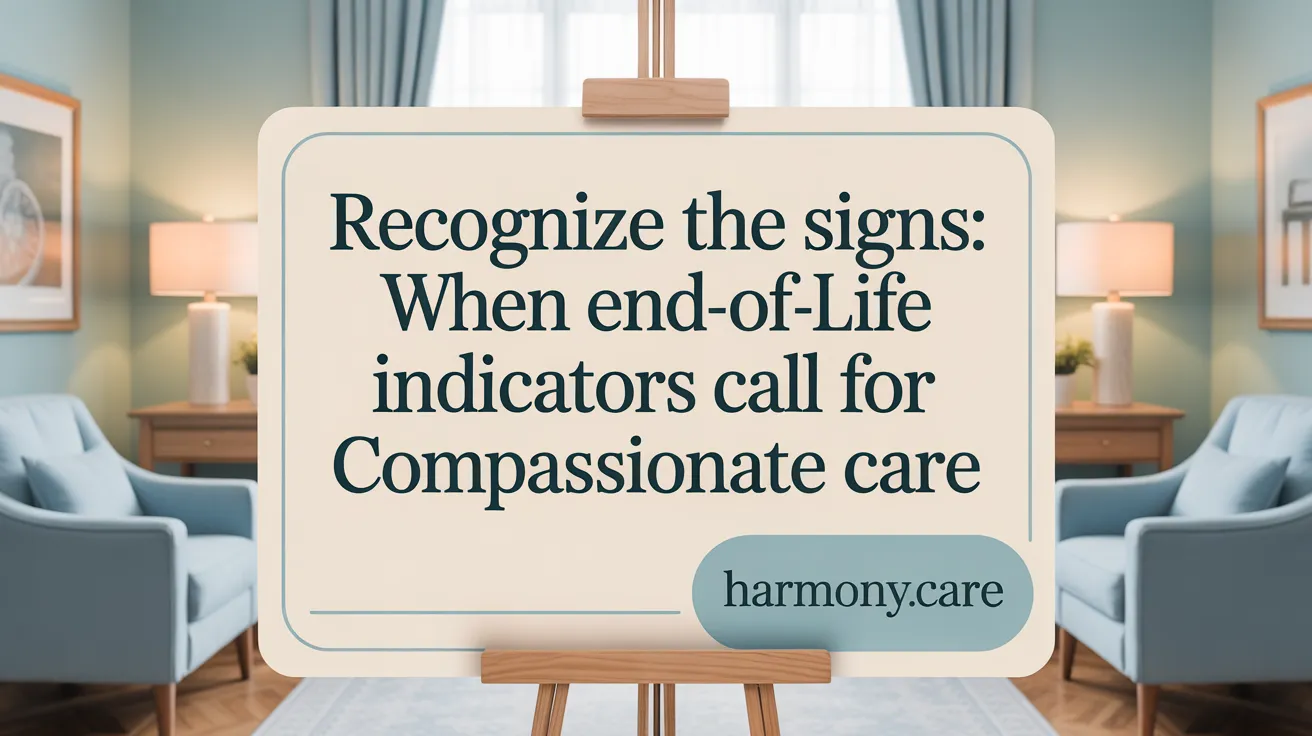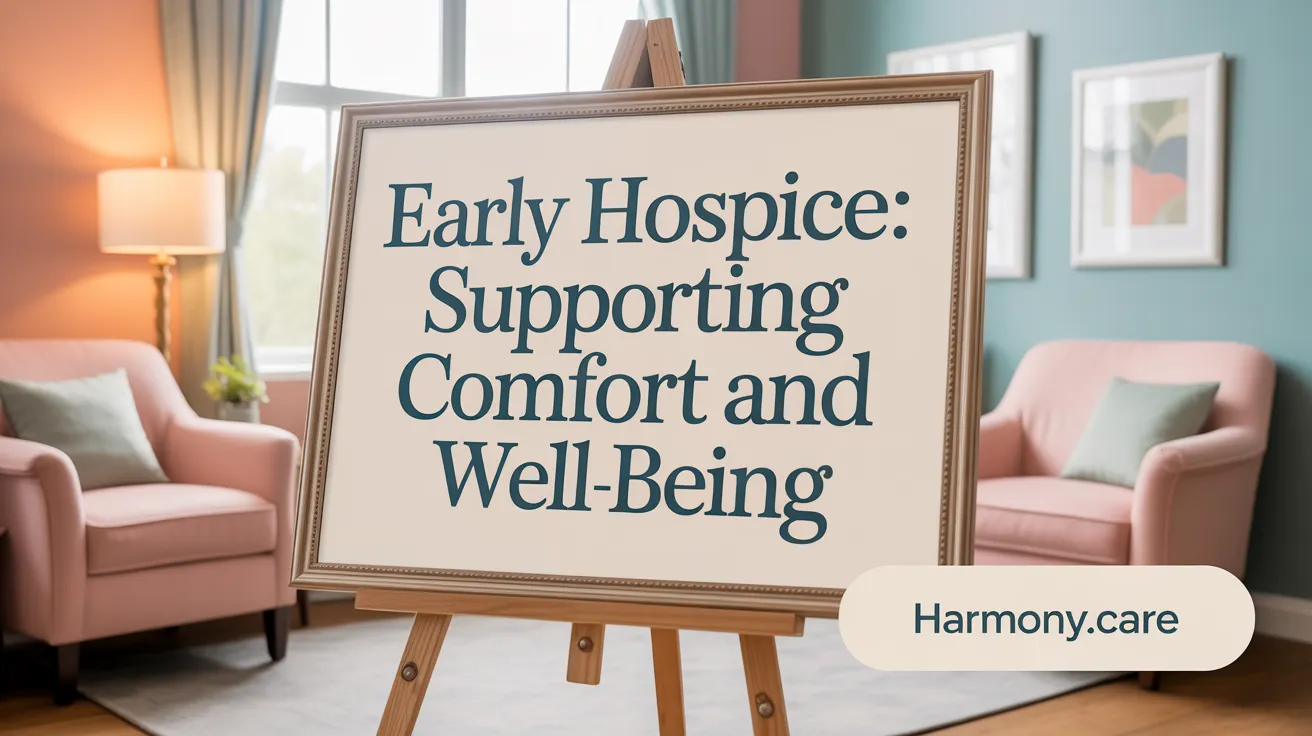Understanding Hospice Care and Its Role
Hospice care focuses on providing compassionate, comprehensive support to individuals facing a terminal illness with a prognosis of six months or less. Prioritizing comfort and quality of life, hospice services can be delivered in a home setting or other familiar environments. Recognizing the signs that signal the need for hospice care is essential for patients and families to navigate this stage with dignity and peace.
Identifying Key Signs and Symptoms for Hospice Consideration
What are the key signs and symptoms indicating it may be time to consider hospice services at home?
Recognizing when to transition to hospice care is crucial for ensuring comfort and dignity in end-of-life stages. Physical decline plays a significant role in this decision. Notable signs include weight loss, decreased appetite, and difficulty performing essential daily activities like bathing, dressing, or preparing meals. As the body slows down, breathing irregularities such as shortness of breath, raspy or gasping breaths, and fluctuations in vital signs like blood pressure or heart rate may become more evident.
Patients often experience increased sleep and fatigue, spending most of the time resting or bedridden. Cognitive and emotional changes are also indicators; confusion, agitation, withdrawal, and decreased alertness suggest that the patient is nearing the final stages of life.
Unmanaged symptoms such as persistent pain, nausea, vomiting, and repeated infections like pneumonia signal that medical treatments are no longer effective and that comfort-focused care is warranted. The recurrence of infections, bodily changes such as skin tears, or pressure sores also hint at the progression of underlying diseases.
Emotional and behavioral cues, including withdrawal from social interactions, restlessness, or signs of distress, further support the need for hospice support. Often, overwhelmed caregivers who find it increasingly difficult to manage these symptoms or provide routine care are additional indicators that professional hospice services could significantly improve quality of life.
In summary, a combination of physical deterioration, cognitive shifts, uncontrolled symptoms, and caregiver stress collectively point toward the appropriate timing for hospice care, focusing on symptom management, emotional support, and comfort measures.
Understanding When Hospice Care at Home is Appropriate

Prognosis criteria and physician certification
Hospice care at home is suitable for individuals with a terminal illness and a limited life expectancy, generally six months or less. This prognosis must be confirmed by a physician through certification, which is essential for eligibility. The process often involves two doctors agreeing on the patient's condition and expected course of illness. Accurate certification allows access to hospice services that focus on comfort rather than curing the disease.
Choice of comfort-focused care over curative treatment
Deciding to pursue hospice care means shifting priorities from curative efforts to comfort and quality of life. Patients may choose hospice when treatments like chemotherapy, dialysis, or surgeries are no longer effective or desired. This transition emphasizes symptom management, relief from pain, and emotional and spiritual support, helping patients spend their remaining time with dignity.
Functional and nutritional decline
A significant indicator for hospice is a noticeable decline in physical capabilities and nutritional status. Symptoms such as inability to perform routine activities like bathing or dressing, along with persistent weight loss or decreased appetite, signal approaching end-of-life stages. Mental changes, including confusion or withdrawal, further mark the progression of illness, making hospice care appropriate to ensure comfort and support.
Eligibility based on illness progression and personal preferences
Eligibility hinges not only on medical deterioration but also on patient wishes. When disease-specific markers, such as recurring infections, uncontrolled symptoms, or dependence on others for daily tasks, become evident, hospice becomes a viable option. Personal preferences, including the desire to avoid invasive treatments and focus on comfort, are essential components when considering hospice at home.
| Signs to Watch | Indicators of Hospice Readiness | Additional Details |
|---|---|---|
| Declining physical function | Loss of independence in ADLs | Inability to walk, bathe, or eat independently |
| Nutritional decline | Significant weight loss | 10% or more over 6 months, or low serum albumin |
| Frequent hospital visits | Recurrent infections | More than one hospital or ER visit within months |
| Mental changes | Confusion or withdrawal | Reduced awareness, agitation, or unresponsiveness |
| Disease-specific signs | Dependence on others | Assistance needed for daily care or incontinence |
Understanding these signs and criteria helps families and healthcare providers make timely decisions to provide comfort-focused care at the appropriate stage.
Recognizing Important End-of-Life and Health Decline Indicators

What are the important end-of-life signs and health decline indicators relevant to hospice decision-making?
Understanding the physical and mental changes that occur as a patient approaches the end of life is essential for timely hospice care. Common signs include a marked decrease in appetite and fluid intake, which indicates the body is preparing for its final stage. Patients often become more sleepy and less responsive, withdrawing from social interactions and daily activities.
Physically, skin changes are prominent; it may become mottled, bluish, or pale, especially on extremities, as circulation slows. Coolness in the hands and feet is typical, and respiration patterns often change, with irregular breaths such as Cheyne-Stokes breathing—characterized by cycles of deep, rapid breaths followed by periods of apnea.
Vital signs tend to fluctuate—blood pressure drops, and pulse may become weak or irregular. Changes in urinary and bowel functions are also signs of declining health. Many patients develop the 'death rattle,' a rattling sound from airway secretions due to decreased swallowing ability, which can cause discomfort but is manageable with medication.
Behavioral signs include agitation, hallucinations, and confusion as consciousness fades. As mental alertness diminishes, patients may experience sensory changes, such as illusions or visions, which can be distressing but are part of the dying process.
Recognizing these indicators allows healthcare providers and families to prioritize comfort, optimize symptom management, and make informed decisions about hospice care timing, ensuring the patient’s dignity and quality of life are maintained in their final days.
Initiating Conversations and Decisions About Hospice Care

When should discussions or decisions about transitioning to hospice care at home be initiated?
Early communication is essential when considering hospice care. Ideally, these discussions should take place well before a crisis occurs, as soon as signs of decline become apparent. Indicators such as increased hospitalizations, persistent unmanageable symptoms, or a significant loss of independence signal the time to introduce the topic.
Starting the conversation early allows patients and families to understand their options, clarify wishes, and plan accordingly. Healthcare providers are pivotal in these discussions; they can recommend hospice based on medical assessments indicating the terminal nature of an illness and a prognosis of six months or less.
Proactive dialogue helps reduce stress by avoiding last-minute decisions and ensures that care preferences are honored. It also provides space for emotional support, addressing fears and clarifying expectations about quality of life and comfort measures.
Timely discussions facilitate a smoother transition to hospice, focusing on dignity, relief from pain, and emotional peace. These conversations should be ongoing, revisited as the illness progresses, ensuring that care remains aligned with the patient’s desires and changing needs.
Benefits of Early Hospice Integration for Quality of Life

What are the benefits of early integration of hospice care for comfort and quality of life?
Starting hospice care sooner rather than later offers numerous advantages that can significantly improve the patient's remaining time. One of the primary benefits is enhanced symptom management. Hospice teams are skilled at controlling pain, nausea, shortness of breath, and emotional distress, ensuring that patients experience greater comfort throughout their end-of-life journey.
Beyond physical comfort, early hospice involvement provides comprehensive emotional and spiritual support. Patients and families have access to counseling, spiritual care, and psychosocial resources, which help address existential concerns, reduce anxiety, and foster peace.
Preventing frequent hospitalizations is another crucial benefit. With proactive symptom management, hospice care can reduce the need for emergency room visits and hospital stays. This allows patients to remain in familiar surroundings, like their home or preferred care setting, where they often feel more comfortable and secure.
Additionally, early hospice care improves overall satisfaction among patients and their loved ones. Families find value in emotional support, guidance for difficult conversations, and assistance with anticipatory grief. As a result, the end-of-life period becomes more peaceful, meaningful, and dignified.
Research indicates that initiating hospice services earlier can lead to a higher quality of life, with patients experiencing less suffering while maintaining dignity and comfort in their final months or weeks. This approach aligns with a patient-centered philosophy emphasizing comfort, respect, and holistic well-being.
Approaching Conversations About Hospice Care with Loved Ones

How can conversations about hospice care be approached effectively with loved ones?
Discussing hospice care is a sensitive process that benefits from careful planning and compassionate communication. It’s advisable to start these conversations early, giving family members time to process information and ask questions. Choosing a calm, private setting helps create a safe space for open dialogue.
Using clear, straightforward language is crucial. Explaining hospice as a supportive approach focused on comfort and quality of life, rather than giving up, can help reduce fear and misconceptions. Listening actively to what your loved one and family members express — including hopes, fears, and concerns — builds trust and understanding.
Involving healthcare professionals during discussions can provide clarity, answer medical questions, and reassure everyone of the planned care approach. These conversations are ongoing and should be revisited as conditions change.
Approaching this topic with empathy, patience, and respect for individual values encourages acceptance. Proper communication not only supports informed decision-making but also eases emotional distress, ensuring that end-of-life wishes are honored in a way that aligns with the patient’s desires.
Embracing Hospice Care: A Compassionate Choice
Recognizing the signs that indicate it’s time to consider hospice services at home empowers patients and families to make informed decisions focused on comfort and dignity. Hospice care offers comprehensive support tailored to physical, emotional, and spiritual needs when curative treatments are no longer effective or desired. Early conversations and timely transitions to hospice provide better symptom control, reduce unnecessary hospital visits, and enhance quality of life in the final months. Approaching this journey with openness and compassion allows loved ones to honor the patient’s wishes, ensuring a peaceful and supportive end-of-life experience.
References
- Eight Signs That It's Time for Hospice
- 10 Signs Your Aging Parents or Loved One Needs Hospice ...
- 8 Signs It May Be Time for Hospice Care
- When is Hospice Recommended? 8 Signs It's Time to Call
- 7 Signs Mom or Dad May Need to Consider Hospice ...
- 5 Signs it is Time for Hospice Care
- When death is near: Signs and symptoms
- When Is Hospice Care Recommended?
